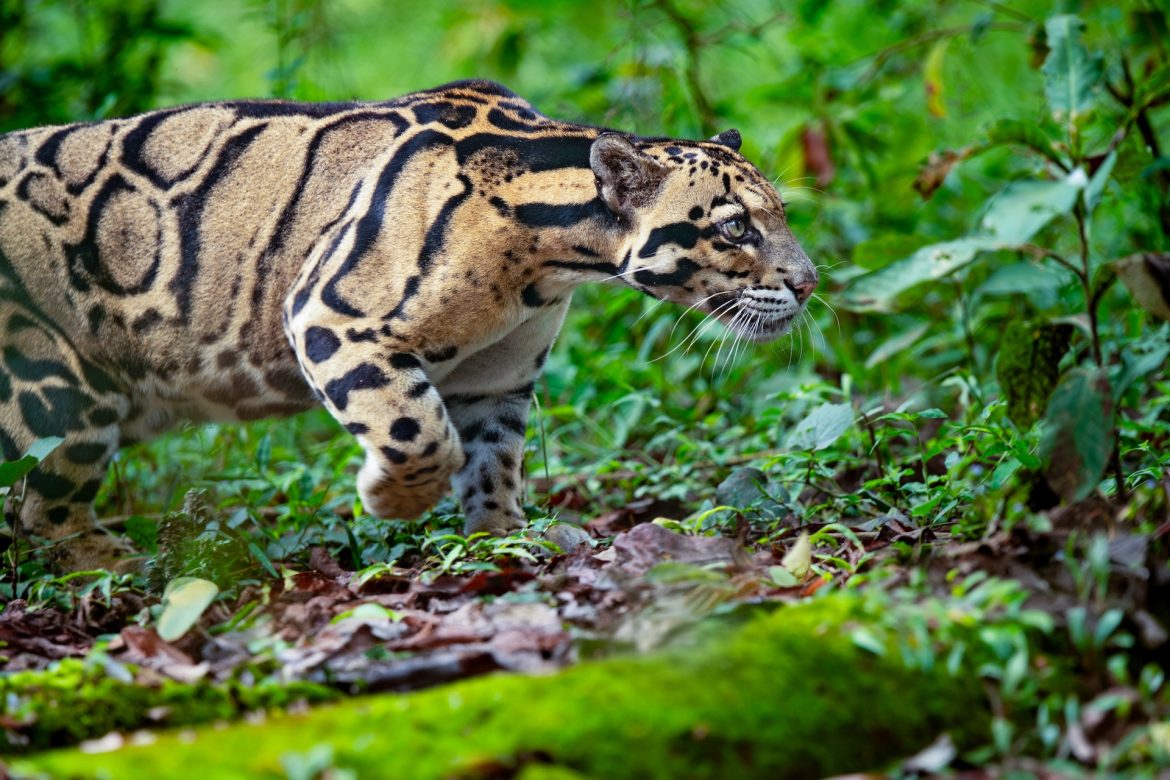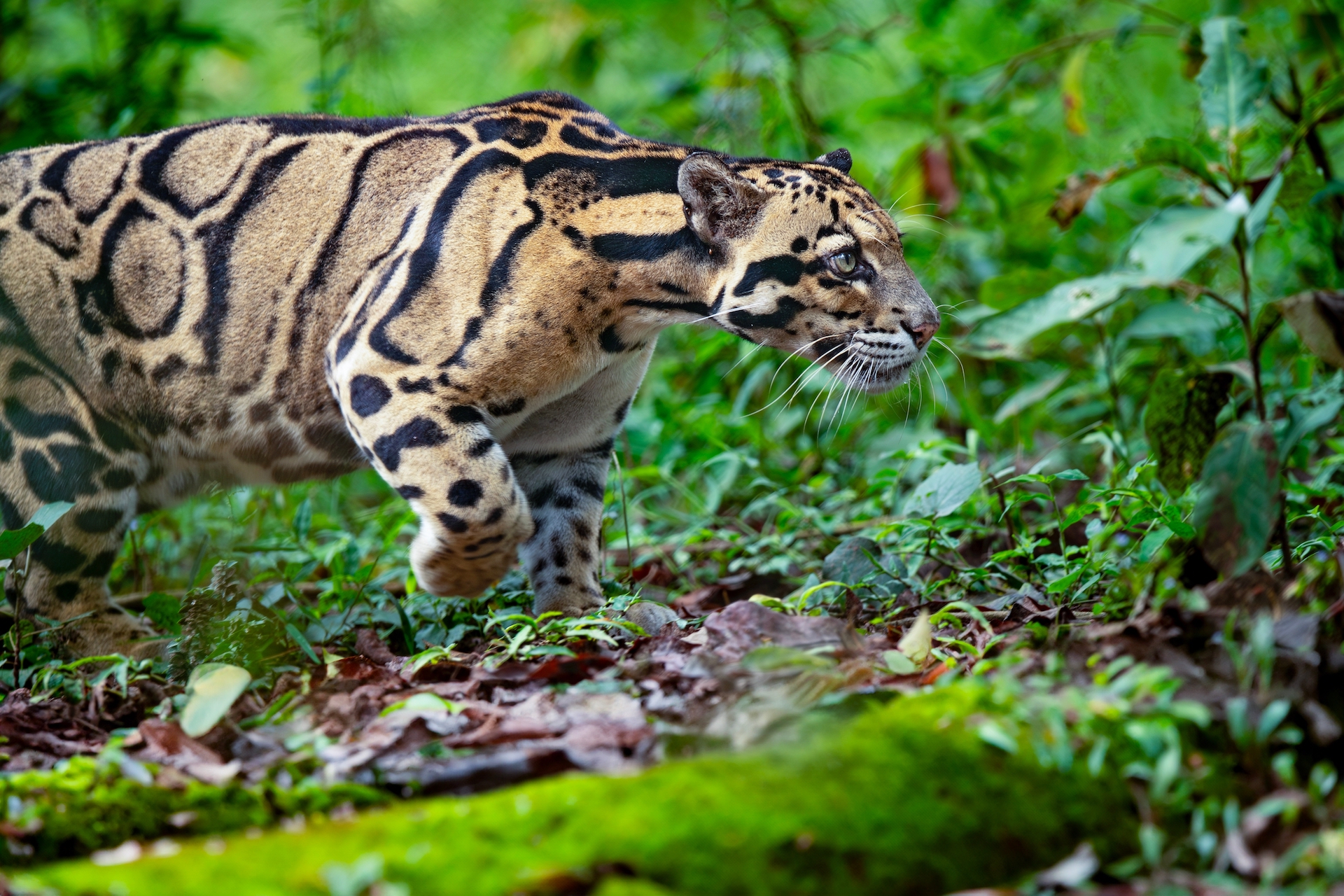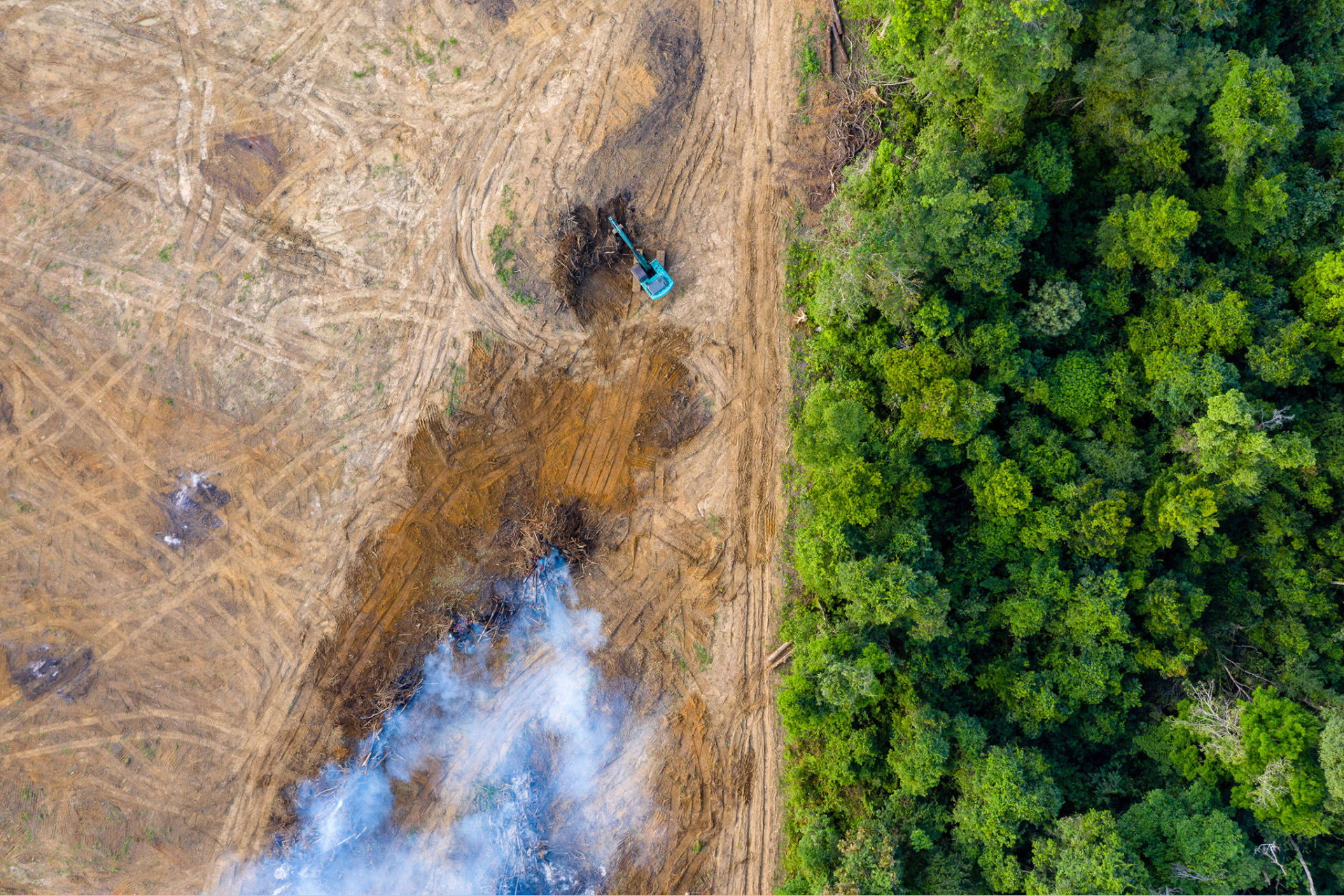Snow leopards, elusive “ghosts of the mountains,” roam across a vast area of northern and central Asia’s high mountains, mostly above the tree line up to 18,000 feet elevation, sparsely scattered across 12 countries—including China, Bhutan, Nepal, India, Pakistan, Russia and Mongolia.
A top predator in their environment, snow leopards are an indicator of the health of their high-altitude habitats, and, increasingly, an important indicator of the impacts of climate change on mountain environments. If snow leopards thrive, so do countless other species and the largest freshwater reservoirs of the planet.
Despite their elusive nature, remarkable beauty and vital ecological role, this majestic big cat faces challenges that require innovative solutions to ensure its long-term survival—recent estimates suggest between 4,080 and 6,590 snow leopards are remaining in the wild.
Conservation travel and community-led initiatives are creating new opportunities to protect snow leopards while strengthening local livelihoods.
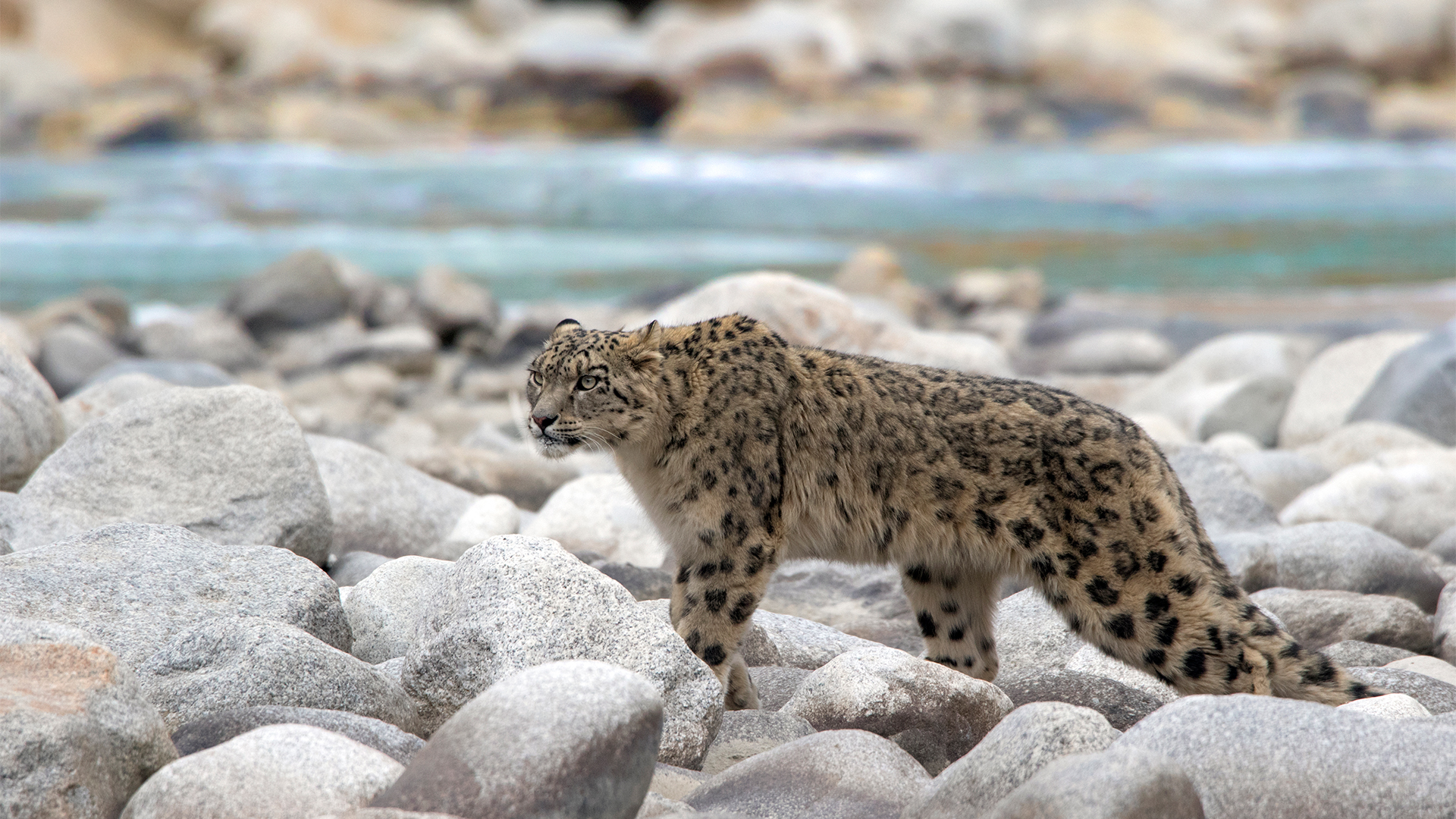
A snow leopard walking along the Indus bank grasses of the Ramganga river. Nat Hab Expedition Leader © Surya Ramachandran
Near-Silent Stealth: Snow Leopard Adaptations
Perfectly adapted to the harsh, high-altitude landscapes of the Himalayas, snow leopards are classified as vulnerable by the International Union for Conservation of Nature (IUCN).
These solitary cats are built for survival in extreme conditions:
- They disappear into the landscape: Snow leopards have thick gray and yellow-tinged fur, with solid spots on their head, neck and lower limbs and rosettes over the rest of their bodies.
- Thick, Insulating Fur: Their dense, pale-gray coat provides both warmth and camouflage against the rocky, snowy terrain and allows them to roam freely at high altitude.
- Powerful Legs & Large Paws: Snow leopards can leap up to 30 feet in a single bound, while their wide, fur-covered paws help them walk on deep snow and rocky outcroppings.
- A Tail Like a Scarf: Their long, bushy tails—nearly the length of their bodies—aid in balance on steep cliffs and double as a wraparound blanket for warmth.
- Silent & Solitary: Unlike other big cats, snow leopards cannot roar. Instead, they communicate through meows, growls, and a unique chuffing sound.
Snow leopards are rarely seen, even by the people who share their habitat. Their stealth, camouflage, and remote mountain homes make them one of the most difficult animals to study and protect—yet their survival is crucial to maintaining the delicate balance of the Himalayan ecosystem.
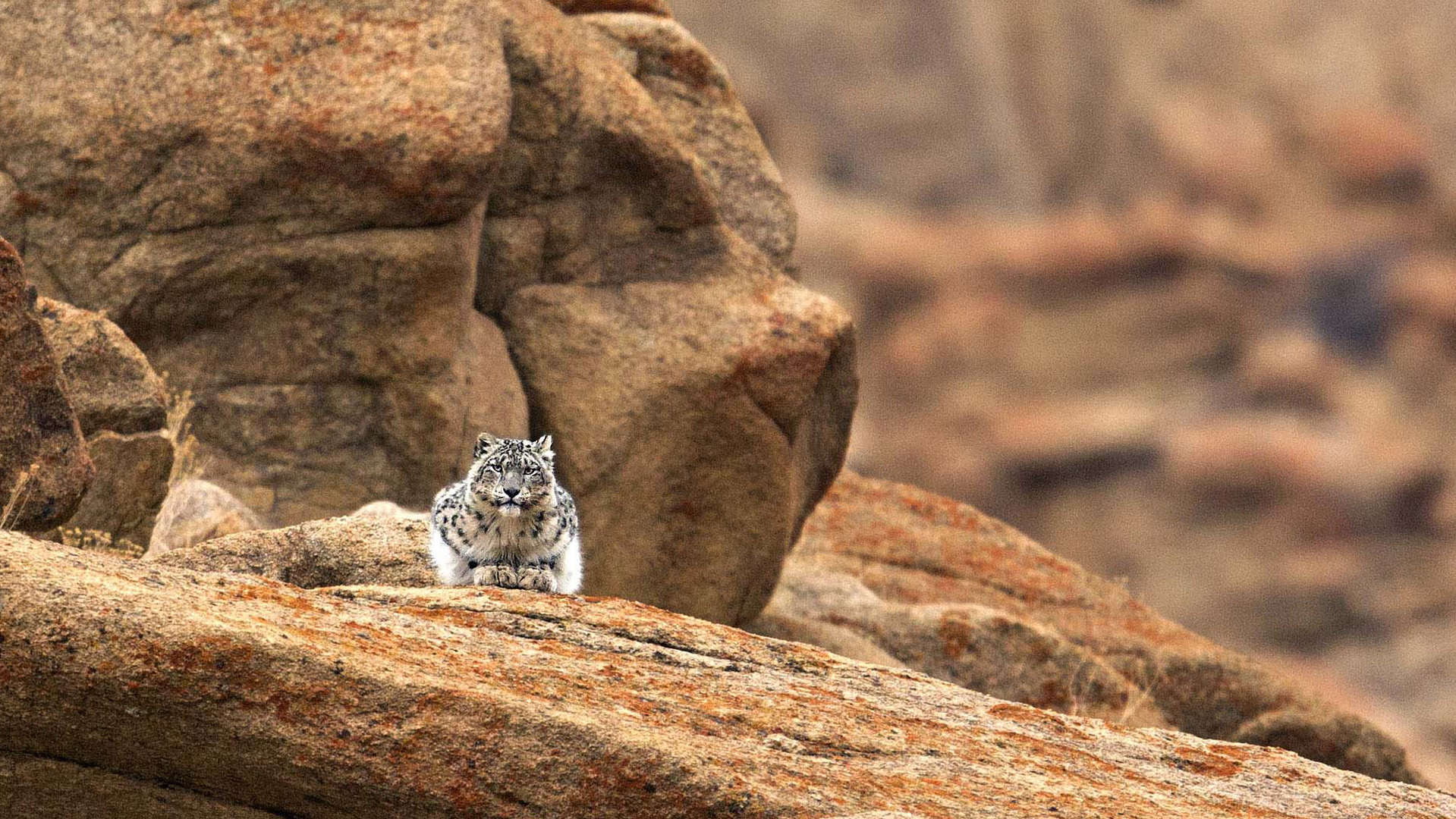
A snow leopard eyes viewer from its rock perch © Surya Ramachandrana
Community-Driven Snow Leopard Conservation is Key
For centuries, Himalayan herders have lived alongside snow leopards, but significant changes in the region have altered this delicate relationship:
- Habitat Loss: Infrastructure development, mining, and expanding human settlements have reduced the available space for both snow leopards and their prey.
- Climate Change: Rising temperatures are reshaping high-altitude ecosystems, affecting prey distribution and forcing snow leopards into new areas where they may be more likely to encounter livestock.
- Declining Wild Prey Populations: Overgrazing, habitat degradation, and competition from domestic animals have reduced the numbers of blue sheep, ibex, and other natural prey.
- Human-Wildlife Conflict: With fewer wild prey, snow leopards sometimes hunt livestock, bringing them into conflict with herders who depend on these animals for their livelihoods.
- Poaching and Illegal Trade: Snow leopards continue to be hunted for their fur, bones, and use in traditional medicine.
As a result, humans are the greatest threat to snow leopards – but that is changing! Local individuals and communities across the Himalayas are taking an active role in snow leopard protection and Himalayan wildlife conservation.
Conservationist-led initiatives—often supported by tourism revenue—are helping communities see snow leopards as valuable assets rather than threats.
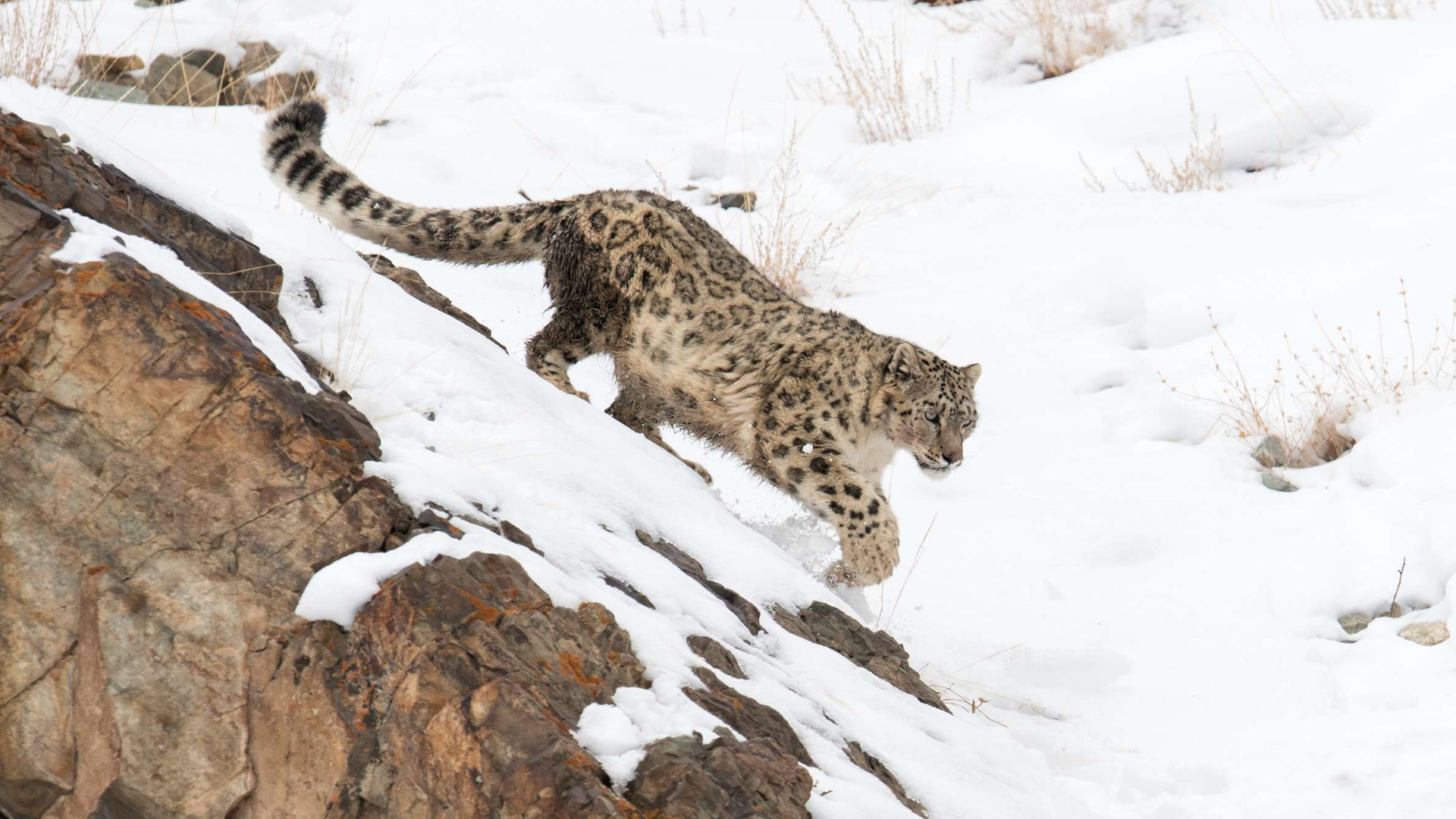
Nat Hab Expedition Leader ©Surya Ramachandran
Snow Leopard Sisters: Community-Based Conservation in Nepal
In Dolpo, Nepal, conservationist Tshiring Lhamu Lama is pioneering a community-based approach to snow leopard and other endangered species conservation.
When she learned that in her home village a snow leopard had killed a family’s entire goat herd, Tshiring returned to convince the family not to kill the animal in retaliation. The family’s young daughter, Tenzin Bhuti Gurung, accepted an offer to apprentice with Tshiring to escape an arranged marriage, and the pair travelled together across the spectacular Himalayan landscape in search of the snow leopard. Amidst centuries-old patriarchy and the changing landscape, they are seeking to save snow leopards together.
Now with support from the Snow Leopard Conservancy, their team focuses on sustainable, practical projects that engage and employ local youth by promoting ecotourism, sustainable livelihoods and environmental and conservation education.
Tshiring’s efforts are shifting local (and with the release in 2025 of a documentary film, Snow Leopard Sisters, global) perceptions of the snow leopard from a threat to an asset for the community. Tshiring and her team and partners are working on:
- reduce retaliatory killings through local conservation education,
- construction of predator-proof corrals, and
- establishing a green local economy enmeshed with snow leopard conservation.

Women dressed in typical Tibetan clothes inside their home in Ladakh, Kashmir, India.
Predator-Proof Corrals: A Win-Win Solution
One of the most effective ways to protect both livestock and snow leopards is through the construction of predator-proof corrals. These enclosures ensure that snow leopards cannot prey on domestic animals, reducing economic losses for herders and eliminating the need for retaliation against the big cats.
These corrals:
- Hold up to 700 mixed livestock (goats, sheep, and yaks), safeguarding them from nighttime attacks.
- Utilize locally sourced stone foundations to prevent snow leopards from digging underneath.
- Feature metal mesh roofing, ensuring that leopards cannot leap into the enclosures.
- Engage local women in construction, providing economic empowerment, conservation education and community stability.
Similar programs in Hemis National Park, Ladakh, India, have demonstrated remarkable success. Since 2001, nearly 200 predator-proof corrals have been built, dramatically reducing the number of livestock lost to snow leopards and fostering a sense of pride in conservation efforts.

Conan Dumenil, Naturalist Guide and Spotter © Ralph Lee Hopkins
Creating Jobs in Snow Leopard Conservation and Eco-Travel
Snow leopard tourism has emerged as a powerful conservation tool, transforming the presence of the rare cats into a source of income and pride for local communities. Managed well, conservation travel proves that economic prosperity and wildlife protection go hand in hand by:
- Training the next generation of trackers, guides and conservationists
- Providing opportunities in the travel and hospitality sectors
- Generating local markets for farmers and herders, artists and more.
The economic stability available from sustainable wildlife tourism in the Himalayas can transform a family. According to the Himalayan Homestays Program, initiated by the Snow Leopard Conservancy–India Trust, a similar tourism model in Ladakh has been in place since 2002, and generates $750 to $1,190 per family each season. This income far surpasses earnings from traditional herding and has helped shift local attitudes toward snow leopard conservation.

Snow Leopard Spotter © Ralph Lee Hopkins
Innovative Deterrents: Simple Snow Leopard Solutions
Predator-proof corrals provide long-term security; other creative solutions help communities live in harmony with snow leopards:
- Solar-Charged Foxlights: Distributed to over 100 herders in Dolpo, these blinking LED lights deter nocturnal snow leopard attacks.
- Playing Radios & Burning Dung: These traditional methods create sensory deterrents that discourage predators from entering livestock areas.
- Community-Based Monitoring: Local conservationists work with herders to document and track snow leopard movements, allowing for proactive conservation efforts.
These solutions demonstrate that peaceful coexistence is achievable through collaboration, education, and innovative thinking.
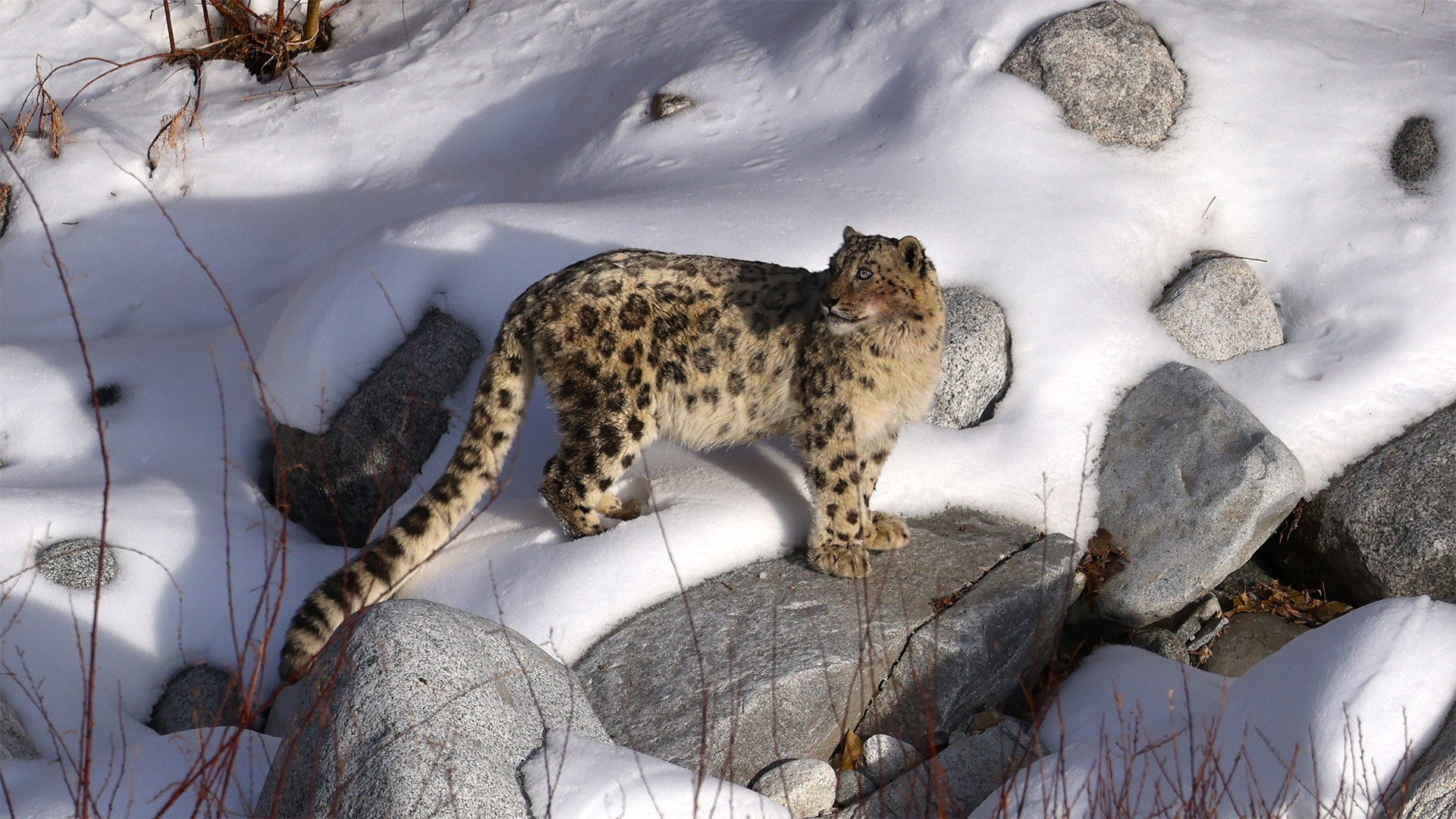
Photographed by Nat Hab Guest © Keri She
Contribute to Coexistence for Snow Leopards and Communities
Wildlife-based travel is a key financial driver of conservation efforts in Ladakh, Nepal, Bhutan and Mongolia. By choosing responsible travel operators that reinvest in conservation, travelers can directly contribute to snow leopard protection while experiencing one of the world’s most breathtaking landscapes.
The future of snow leopards is filled with promise, thanks to the inspiring efforts of conservationists, local communities, and travelers who choose to support ethical wildlife tourism.
Tshiring Lhamu Lama’s groundbreaking work in Nepal highlights the power of community-driven conservation, proving that when local people see value in protecting wildlife, long-term change is not only possible—it’s already happening.
For travelers seeking a meaningful, conservation-focused adventure, snow leopard trekking in Ladakh and Nepal offers an unparalleled opportunity to witness one of the world’s most elusive big cats, while directly contributing to their survival. Supporting sustainable tourism, investing in local conservation efforts, and promoting coexistence, travelers and communities alike are playing a crucial role in securing a future for these magnificent cats.
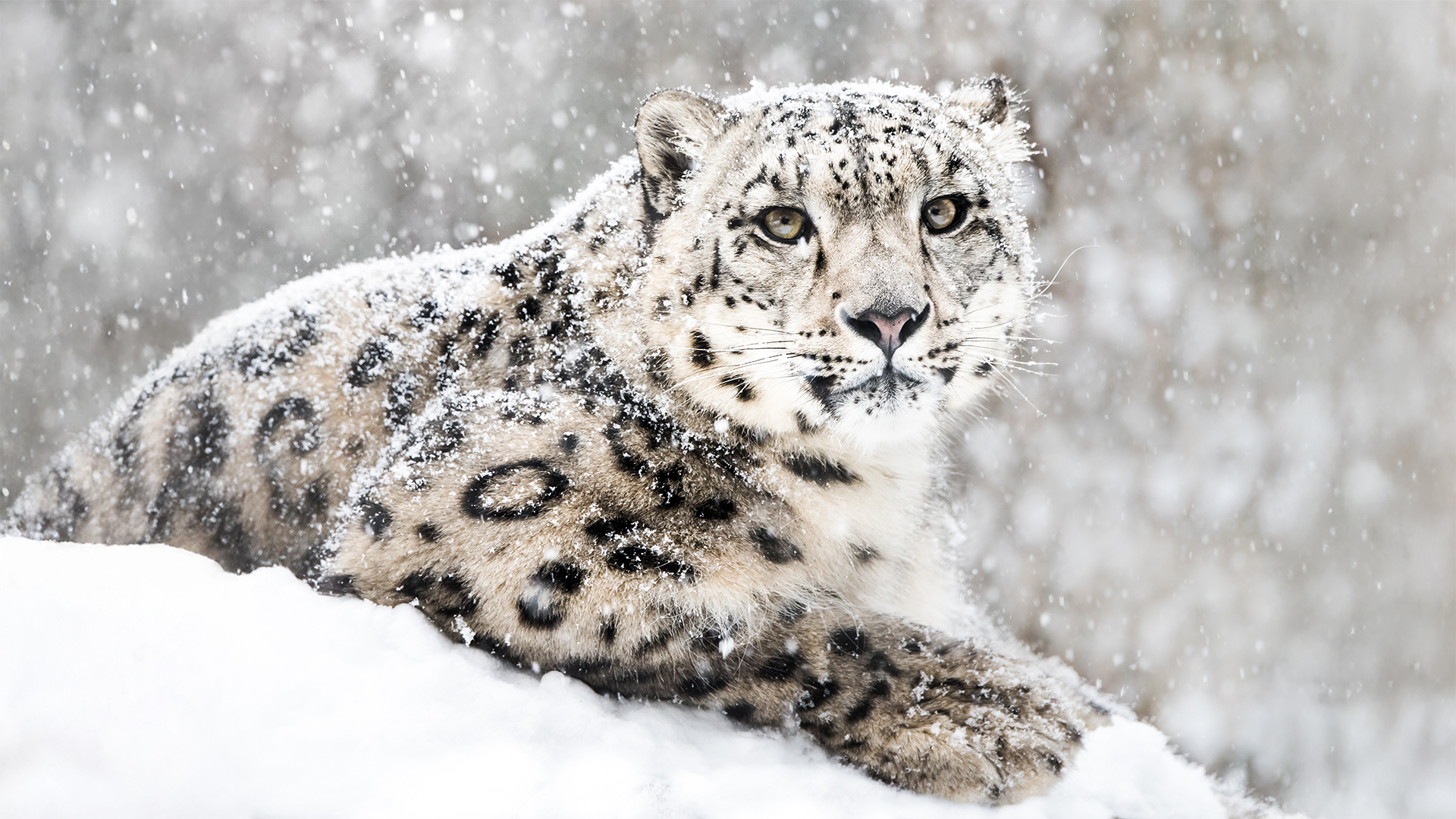
Looking for More on Snow Leopards & Their Habitat?
Nat Hab offers two snow leopard itineraries: Snow Leopard Quest Photo Expedition & Land of the Snow Leopard. Whether you’re preparing for your upcoming snow leopard expedition or just want to learn more about the alluring cats that roam the Indian Himalayas, we’ve got you covered.
- On our Know Before You Go: Snow Leopards of the Himalayas page, we’ve rounded up an array of useful resources, from wildlife guides and packing tips to compelling first-hand accounts written by Nat Hab travelers and staff.
- Get photo tips from our blog post 6 Iconic Shots to Capture in the Land of the Snow Leopard, and watch the Daily Dose of Nature below—Expedition Leader and pro photographer Surya Ramachandran shares his advice for photographing the “ghost of the mountains,” including must-bring camera gear and tips for shooting through a scope and in cold climes.
The post Saving Snow Leopards: Conservation Travel Contributes to Coexistence first appeared on Good Nature Travel Blog.

